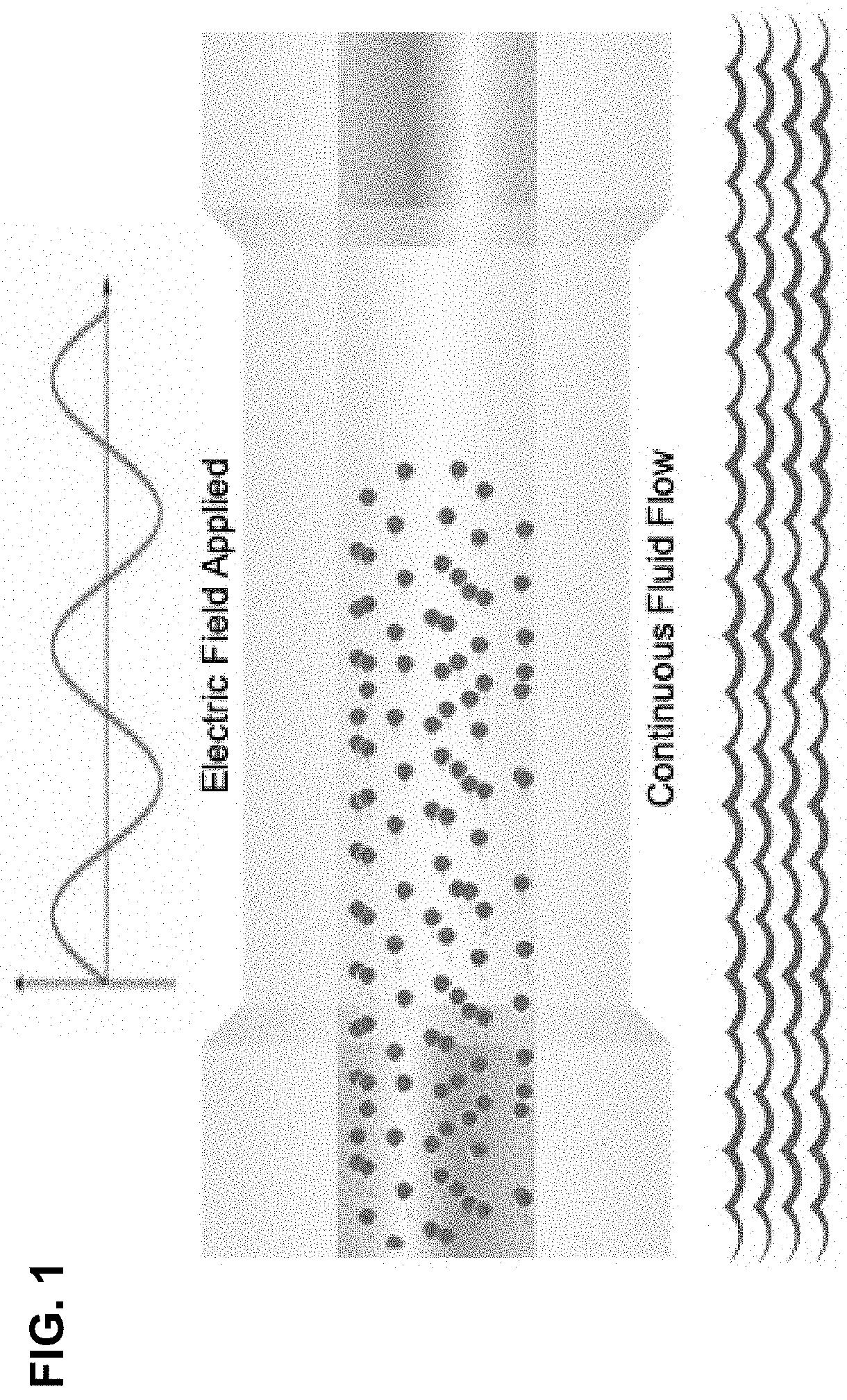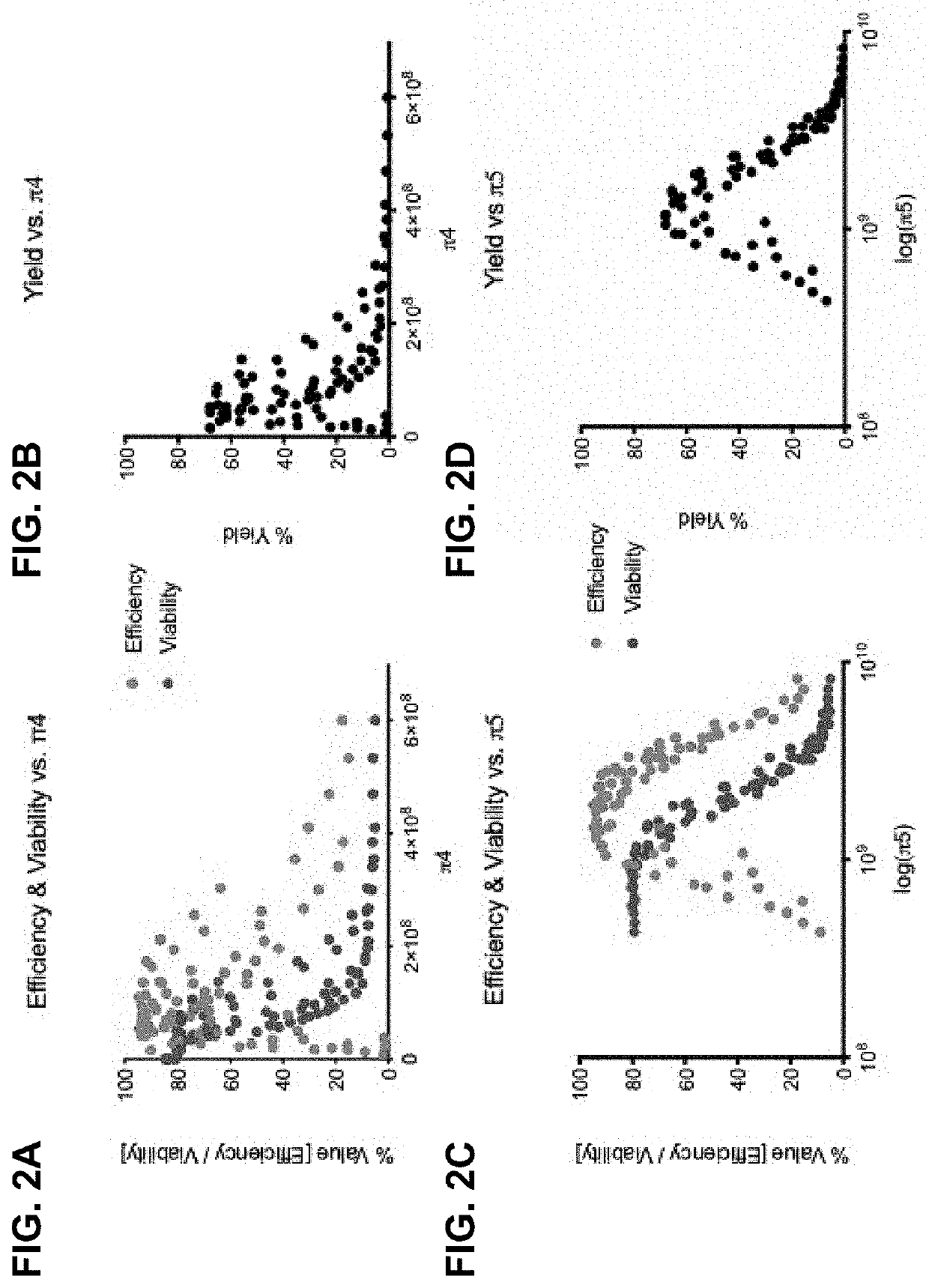Methods for electro-mechanical transfection
- Summary
- Abstract
- Description
- Claims
- Application Information
AI Technical Summary
Problems solved by technology
Method used
Image
Examples
Example
Example 1—Application of Electro-mechanical Transfection
[0174]Electro-mechanical transfection implemented with an automated liquid handler is demonstrated herein. In this example, a flow cell was designed to integrate with the liquid handling system in order to enable delivery of electrical and mechanical energy to a cell suspension (FIG. 1). These flow cells include a pipette tip designed with a reservoir, enabling pickup and dispensing of cells and payload suspended in fluid buffer material. As the cells and payload suspended in the fluid buffer passed through the flow cell with a defined flow rate, a precise electric field is delivered across the flow cell via contact with electrodes placed across the flow cell region. These cells are dispensed into a 96 well plate containing growth media and cultured for 24 hours. Biological analysis is then performed to determine output metrics via flow cytometer (gating example can be found in FIG. 7).
[0175]Effective use of electro-mechanical ...
Example
Example 2—Transcriptional profiling
[0177]To further asses the effects of delivery of genetic payloads into T cells using electro-mechanical transfection, transcriptome analysis was performed to evaluate transcriptional changes that occur after processing (FIGS. 3A-3F). Additionally, commercially available non-viral electroporation-based systems were included for comparison metrics: the Neon™ transfection system from Thermo Fisher (referred to as ‘Neon™’) and the 4D Nucleofector™ from Lonza (referred to as ‘4D Nucleofector™’). Each system was evaluated using 100 μL reactions containing 5 M cells and device-specific proprietary programs and buffers. The program information for each device is provided in the Materials section. For each device, cells were processed without payload present and compared to a donor control that did not experience any processing. For this analysis, cells from two donors were processed in duplicate on each device. Significant (p<0.05) gene dysregulation, gre...
Example
Example 3—Delivery of Multiple mRNAs to Primary Human T Cells
[0182]We performed experiments to evaluate the capability of electro-mechanical transfection methods to deliver multiple payloads into a single cell both in parallel (i.e., co-delivery via a single treatment) and in series (i.e., staggered treatments, 48 hours apart). The parallel condition was performed on the same day with a cell mix containing two mRNAs, including a GFP reporter mRNA and a mCherry reporter mRNA, while the series treatments were performed two days apart with cell mixes containing a single mRNA at each time point, first with GFP reporter mRNA then mCherry mRNA 48 hours later. The mRNAs expressed fluorescent reporter genes to track delivery efficiency at the single cell level (FIGS. 11A-11C). The viability of primary T cells 24 hours after treatment with electro-mechanical transfection was −80% for both methods (FIG. 11A), demonstrating that parallel and in series transfections were not detrimental to cell...
PUM
 Login to View More
Login to View More Abstract
Description
Claims
Application Information
 Login to View More
Login to View More - R&D
- Intellectual Property
- Life Sciences
- Materials
- Tech Scout
- Unparalleled Data Quality
- Higher Quality Content
- 60% Fewer Hallucinations
Browse by: Latest US Patents, China's latest patents, Technical Efficacy Thesaurus, Application Domain, Technology Topic, Popular Technical Reports.
© 2025 PatSnap. All rights reserved.Legal|Privacy policy|Modern Slavery Act Transparency Statement|Sitemap|About US| Contact US: help@patsnap.com



